Archive | Regional cooperation and integration RSS feed for this section
Regional cooperation and integration
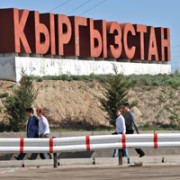 Regional cooperation and integration
Regional cooperation and integration
 Regional cooperation and integration
Regional cooperation and integration
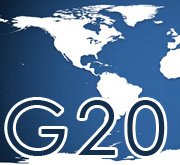 Regional cooperation and integration
Regional cooperation and integration
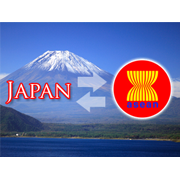 Regional cooperation and integration
Regional cooperation and integration
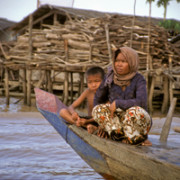 Regional cooperation and integration
Regional cooperation and integration
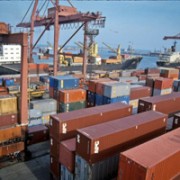 Regional cooperation and integration
Regional cooperation and integration
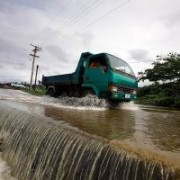 Regional cooperation and integration
Regional cooperation and integration
 Regional cooperation and integration
Regional cooperation and integration
 Regional cooperation and integration
Regional cooperation and integration

Is regional economic integration in Central Asia a doomed vision or a promising future?

Central Asia has for centuries been seen as a neglected Russian “backyard,” but international interest in the region has increased over the last two decades because of its vast stores of energy and natural resources. But to achieve a brighter future the region must pursue economic integration. In the early 1990s, Kazakhstan, Kyrgyz Republic, Tajikistan, Turkmenistan, and Uzbekistan became independent countries with the collapse of the Soviet Union. The abrupt separation from Moscow, the sudden interruption of economic relations under the Soviet Union, and the unprepared transition from state-directed to market economy created a deep economic crisis in all five countries. The beginning of this century saw their economic systems change and stabilize—but this occurred as these countries disclosed strong authoritarian trends.
Can the PRC win the hearts and minds of Africa?

As economic power shifts from West to East, one of the key players affecting Asia’s rise is Africa. But as is often the case with Africa, it is often overlooked. So much is written about the rise of the BRICS countries. Indonesia, Mexico, and Turkey have recently been added to the global growth trackers’ lists. But what about Africa?
G20 and international economic policy coordination

When G20 Leaders met in April 2009 they agreed on coordinated fiscal stimulus in response to the unfolding financial crisis. This explicit coordination addressed the concern that any one country’s stimulus would largely flow overseas through the external account, benefitting the global economy but not doing much to boost domestic demand. This concerted stimulus seems to have been successful. In the face of a dramatic collapse in financial systems in much of the advanced world the fiscal stimulus put a floor under contracting GDP. The People’s Republic of China’s (PRC) huge stimulus produced a swift return to 10% growth in 2010.
New challenges for ASEAN–Japan relations: Celebrating the 40th year of ASEAN–Japan friendship and cooperation

The Association of Southeast Asian Nations (ASEAN) and the Government of Japan are celebrating their 40th year of friendship and cooperation in 2013. A Commemorative Summit will be held in Tokyo starting on 13 December, at which leaders are expected to adopt a medium- to long-term vision to chart the future direction of ASEAN–Japan relations.ASEAN and Japan’s cooperative partnership began in 1973 with the establishment of the ASEAN–Japan forum on synthetic rubber production issues. From this initial success, ASEAN and Japan have forged close cooperation through the years in the pursuit of peace, stability, development, and prosperity in Asia. Japan’s Prime Minister, Shinzo Abe, has visited all 10 ASEAN member states this year, starting soon after his assumption of office in late December 2012.
The PRC in the Greater Mekong Subregion: Economic and political implications

Driving out of the Wattay International Airport in Vientiane, Lao People’s Democratic Republic (PDR), one sees a large billboard featuring the overseas campus of Suzhou University in the People’s Republic of China’s (PRC). In a coffee shop in Vientiane, the first author met two PRC businessmen who talked about the prospect of a new venture to extract copper in northern Lao PDR. Just across the border from the PRC in Boten, Lao PDR, the second author talked with a local Lao driver in Chinese about the trucks full of fruit from Thailand parked minutes away from the PRC border checkpoint near the PRC-built casino ghost town that once ruled the area.1 And on the outskirts of Yunnan’s capital city of Kunming, the PRC’s fourth largest airport behind Beijing, Shanghai, and Guangzhou, Changshui International Airport, was opened in mid-2012. While seemingly disparate, these anecdotes reveal the ambition of the PRC’s “Go Southwest” strategy to politically and economically connect Southeast Asia to the PRC.
Japan must join the Trans-Pacific Partnership Agreement talks

Time is running out for Japan to join the Trans-Pacific Partnership Agreement (TPP), as the negotiating countries aim to conclude the talks before the Asia-Pacific Economic Cooperation (APEC) meeting in October this year. Although former Japanese Prime Minister Yoshihiko Noda had expressed strong interest during his tenure in joining the TPP negotiations, his successor, Prime Minister Shinzo Abe, has not expressed similar sentiments as the Liberal Democratic Party (LDP) took a cautious stance on the TPP during Japan’s December 2012 general election. The TPP is a high-standard and comprehensive trade agreement under negotiation by Australia, Brunei Darussalam, Canada, Chile, Malaysia, Mexico, New Zealand, Peru, Singapore, the United States (US), and Viet Nam.
Natural Disasters and Production Networks in the Asia and Pacific Region

Recent decades have witnessed a rapid expansion of production networks and supply chains in East and Southeast Asia, made possible by underlying forces of technological advances and reductions in trade barriers and driven by pursuit of economies of scale and agglomeration, and greater efficiency and lower costs. The successful functioning of such finely constructed and balanced production networks and supply chains rests, however, on the premise of there being no major disruptions to the system, including natural disasters. Historical data indicate that the East and Southeast Asia region is, in fact, especially prone to a variety of natural hazards (earthquakes, tsunamis, floods, and typhoons).
Is regional economic integration enough? The search for ‘Wave 3’ growth

“Those who cannot remember the past are condemned to repeat it,” said philosopher George Santayana. The aim of this paper is to draw lessons from Asia’s supposed “growth miracle” by disaggregating when, where—and why—growth occurred to better understand the roles of exogenous factors versus domestic policy choices. Our thesis is that the post-World War II “miracle” growth shared by many regional economies was a result of a unique set of circumstances linked not to their “Asian-ness”—but to exogenous, geo-political, developments and, in particular, to the Cold War. The Cold War was a battle for ideological leadership in political and economic domains between two nuclear powers who grew to accept a status quo based on the principle of mutual assured destruction (MAD).
The eurozone crisis will not stop Asia’s economic integration

ASEAN aims to create an ASEAN Economic Community by 2015, while the signing in May 2012 of a Trilateral Investment Agreement by the People’s Republic of China, Japan, and the Republic of Korea was a milestone in cooperation between three countries that together account for nearly 20% of global GDP and trade. The pact could lead to a three-way, free trade agreement (FTA) between the economic giants. Financial cooperation in ASEAN+3 has been accelerating. The region’s emergency financial safety net, the Chiang Mai Initiative Multilateralization (CMIM), has doubled in size as decided by officials in May 2012, although it is yet to be made operational.
Energy is the key to 21st century Eurasian geopolitics

The pattern of world energy trade has changed significantly in recent decades and this is having profound implications for global geopolitics. Several Asian economies, particularly the People’s Republic of China (PRC) and India, have emerged as the region’s most conspicuous energy consumers because of their phenomenal economic growth. On the supply side, the world’s largest energy producers are located in the geographically proximate regions of Central Asia, the Middle East, and Russia. A complementary relationship between these energy exporters and suppliers is evident and is being strengthened, connecting together Central and East Asia, parts of India, the Persian Gulf, and Russia. I call this the “new continentalism.”


Search
Subscribe / Connect to Asia Pathways
Subjects
- Agriculture and natural resources
- Blog
- Capacity development
- Climate change
- Economics
- Education
- Energy
- Environment
- Finance sector development
- Gender
- Governance and public sector management
- Health
- Industry and trade
- Information and Communications Technology
- Infrastructure
- Miscellaneous
- Population
- Poverty
- Private sector development
- Regional cooperation and integration
- Sanitation
- Social development and protection
- Transport
- Uncategorized
- Urban development
- Video Blog
- Water
Recent Posts
- Navigating Linear Transport Infrastructure Through Conservation Landscapes
- How Are Technology Trends Shaping the Future of Insurance?
- Securing Asia’s Future Through Soil Health: Why It Matters and What Must Be Done
- Silent Struggles: Advancing Women’s Mobility with Public Transportation in Asia
- Mind Your Neighbors: Measuring Shrimp Farm Spillovers




Recent Comments